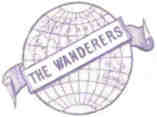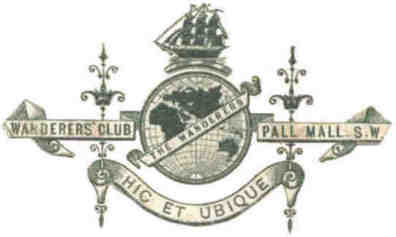EDWARD LAW
ARMS, CRESTS & MONOGRAMS
LONDON CLUBS.
 One of the most abundant classes of crests
is that of the London clubs, which were such a feature of the
life of middle and upper class gentlemen through the Victorian
era. Most albums will contain at least one crest of this type,
and many have several examples. These clubs, which were intended
to be a home from home for the well-to-do, provided crested
stationery and envelopes for the use of members, a factor in
their abundance.
One of the most abundant classes of crests
is that of the London clubs, which were such a feature of the
life of middle and upper class gentlemen through the Victorian
era. Most albums will contain at least one crest of this type,
and many have several examples. These clubs, which were intended
to be a home from home for the well-to-do, provided crested
stationery and envelopes for the use of members, a factor in
their abundance.
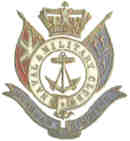 Among the more commonly encountered club
crests is that of the Naval and Military Club, known
affectionately as the In and Out from the directive lettering on
its gateposts. The attractive crest illustrated above was
probably from a set or from an invitation. The usual crest was in
a single colour, with examples being noted in blue, black, red
and brown.
Among the more commonly encountered club
crests is that of the Naval and Military Club, known
affectionately as the In and Out from the directive lettering on
its gateposts. The attractive crest illustrated above was
probably from a set or from an invitation. The usual crest was in
a single colour, with examples being noted in blue, black, red
and brown.
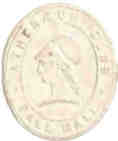
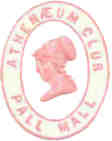 The crest of the Athenaeum Club was
designed by Sir Thomas Lawrence. It is usually found blind
impressed: the pink confection is from a set of ‘club’
crests. The club was founded in 1824 for the association of men
of eminence and attainment in science, art and literature, and
their patrons.
The crest of the Athenaeum Club was
designed by Sir Thomas Lawrence. It is usually found blind
impressed: the pink confection is from a set of ‘club’
crests. The club was founded in 1824 for the association of men
of eminence and attainment in science, art and literature, and
their patrons.
The Albermarle Club is
best remembered as the place where Lord Queensberry left his card
for Oscar Wilde, placed within one of the Albermarle’s
crested envelopes.
Many of the leading clubs
had, in their heydays, long waiting lists: sixteen years for the
Athenaeum at one time. Partly because of this junior clubs were
established for the Athenaeum, Army and Navy, Carlton,
Constitutional, and United Service among others.
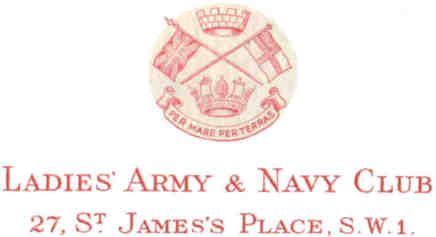
The clubs
were, of course, restricted initially to males. Inevitably the
restriction was eased with women being admitted as associate
members. In some cases there was total emancipation, as at the
Ladies Carlton and Ladies Army and Navy Clubs.

The East India United
Service Club, despite its name, was a London club. It was founded
in 1849 for the East India Company’s employees including
those on home leave and retired.

The Garrick, which has an
attractive crest, was founded in 1831 not exclusively for actors.
Among its best known members were Charles Dickens, William
Makepeace Thackeray, Anthony Trollope, W S Gilbert, Arthur
Sullivan and, after being initially blackballed, Henry Irving.
|
In
the 1880s William Cody, Buffalo Bill, visited England and
wrote: Then
I was made an honorary member of nearly all the clubs,
social, festive, artistic, fashionable, and many of them
were distinctly distinguishing. Notably the Reform Club,
where I met the Prince of Wales, the Duke of Cambridge
and other royalty. Then there was luncheon at the Mansion
House with the Lord Mayor and Lady Mayoress; dinner at
the Beaufort Club, where that fine sportsman, the Duke of
Beaufort, was host; a memorable evening at the Savage
Club with Mr. Wilson Barrett -just home from an American
tour- presiding, with such choice spirits present as
Henry Irving, John L. Toole and a host of others of the
art, literary and histrionic element of London and the
world.
The Duke of
Teck entertained me at United Arts Club, Lord Bruce and
other lords at the St. George's Club.
|
 St Stephen’s Club was founded in 1870.
Its original position was close to the Houses of Parliament and
there was a connecting tunnel through which those of its members
who were Conservative MPs could walk when the club’s
division bell sounded.
St Stephen’s Club was founded in 1870.
Its original position was close to the Houses of Parliament and
there was a connecting tunnel through which those of its members
who were Conservative MPs could walk when the club’s
division bell sounded.
The Wanderers Club had
some attractive and impressive crests.
Return to HOME
or to TOPICS PAGE
Page updated 20 MARCH
2001
 One of the most abundant classes of crests
is that of the London clubs, which were such a feature of the
life of middle and upper class gentlemen through the Victorian
era. Most albums will contain at least one crest of this type,
and many have several examples. These clubs, which were intended
to be a home from home for the well-to-do, provided crested
stationery and envelopes for the use of members, a factor in
their abundance.
One of the most abundant classes of crests
is that of the London clubs, which were such a feature of the
life of middle and upper class gentlemen through the Victorian
era. Most albums will contain at least one crest of this type,
and many have several examples. These clubs, which were intended
to be a home from home for the well-to-do, provided crested
stationery and envelopes for the use of members, a factor in
their abundance. Among the more commonly encountered club
crests is that of the Naval and Military Club, known
affectionately as the In and Out from the directive lettering on
its gateposts. The attractive crest illustrated above was
probably from a set or from an invitation. The usual crest was in
a single colour, with examples being noted in blue, black, red
and brown.
Among the more commonly encountered club
crests is that of the Naval and Military Club, known
affectionately as the In and Out from the directive lettering on
its gateposts. The attractive crest illustrated above was
probably from a set or from an invitation. The usual crest was in
a single colour, with examples being noted in blue, black, red
and brown.
 The crest of the Athenaeum Club was
designed by Sir Thomas Lawrence. It is usually found blind
impressed: the pink confection is from a set of ‘club’
crests. The club was founded in 1824 for the association of men
of eminence and attainment in science, art and literature, and
their patrons.
The crest of the Athenaeum Club was
designed by Sir Thomas Lawrence. It is usually found blind
impressed: the pink confection is from a set of ‘club’
crests. The club was founded in 1824 for the association of men
of eminence and attainment in science, art and literature, and
their patrons.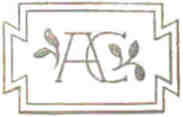
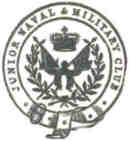
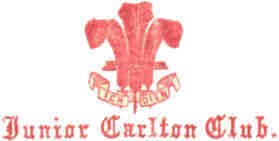
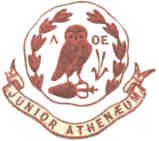
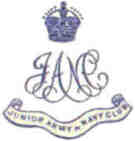





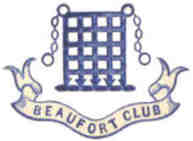

 St Stephen’s Club was founded in 1870.
Its original position was close to the Houses of Parliament and
there was a connecting tunnel through which those of its members
who were Conservative MPs could walk when the club’s
division bell sounded.
St Stephen’s Club was founded in 1870.
Its original position was close to the Houses of Parliament and
there was a connecting tunnel through which those of its members
who were Conservative MPs could walk when the club’s
division bell sounded.